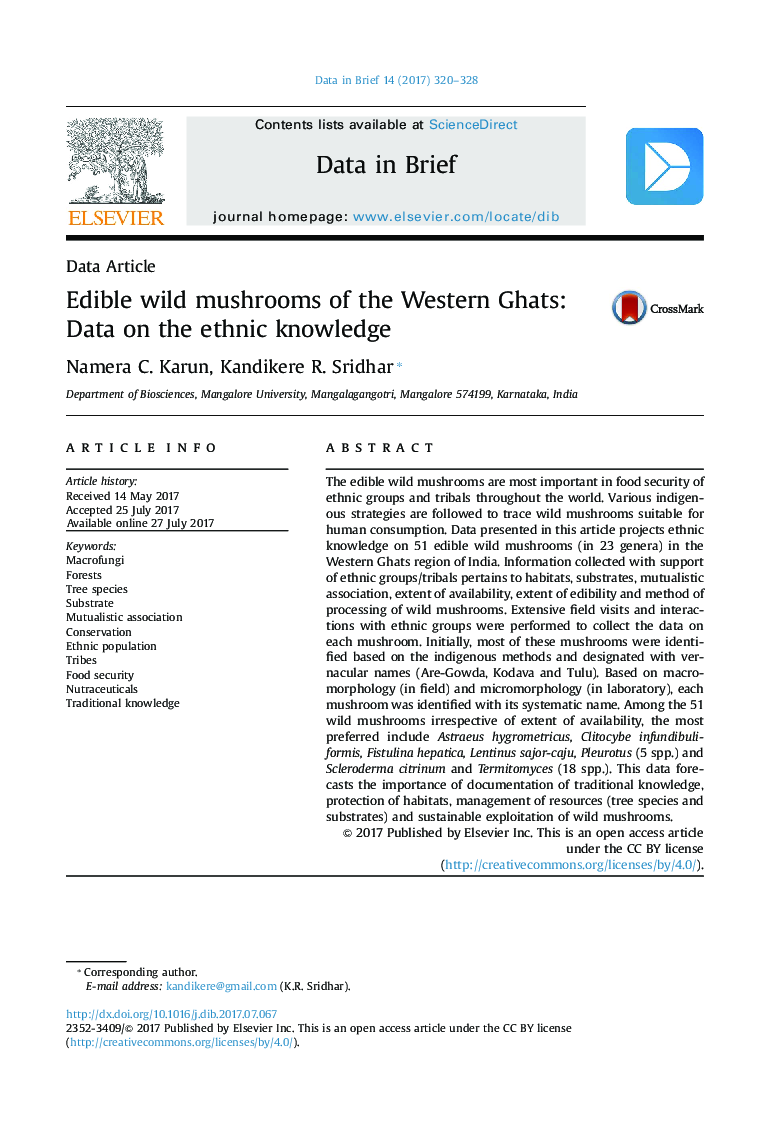| Article ID | Journal | Published Year | Pages | File Type |
|---|---|---|---|---|
| 4765033 | Data in Brief | 2017 | 9 Pages |
The edible wild mushrooms are most important in food security of ethnic groups and tribals throughout the world. Various indigenous strategies are followed to trace wild mushrooms suitable for human consumption. Data presented in this article projects ethnic knowledge on 51 edible wild mushrooms (in 23 genera) in the Western Ghats region of India. Information collected with support of ethnic groups/tribals pertains to habitats, substrates, mutualistic association, extent of availability, extent of edibility and method of processing of wild mushrooms. Extensive field visits and interactions with ethnic groups were performed to collect the data on each mushroom. Initially, most of these mushrooms were identified based on the indigenous methods and designated with vernacular names (Are-Gowda, Kodava and Tulu). Based on macromorphology (in field) and micromorphology (in laboratory), each mushroom was identified with its systematic name. Among the 51 wild mushrooms irrespective of extent of availability, the most preferred include Astraeus hygrometricus, Clitocybe infundibuliformis, Fistulina hepatica, Lentinus sajor-caju, Pleurotus (5 spp.) and Scleroderma citrinum and Termitomyces (18 spp.). This data forecasts the importance of documentation of traditional knowledge, protection of habitats, management of resources (tree species and substrates) and sustainable exploitation of wild mushrooms.
